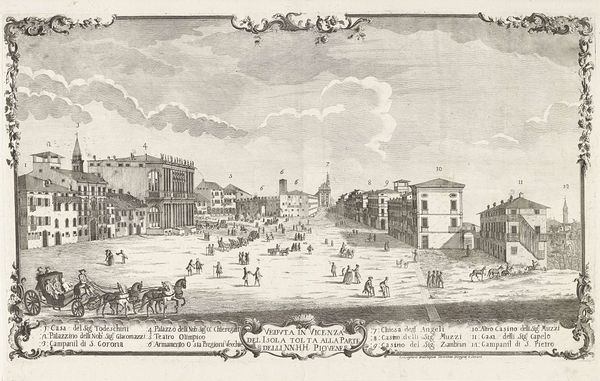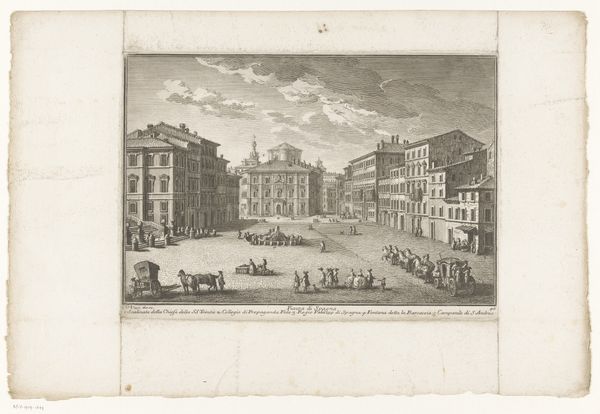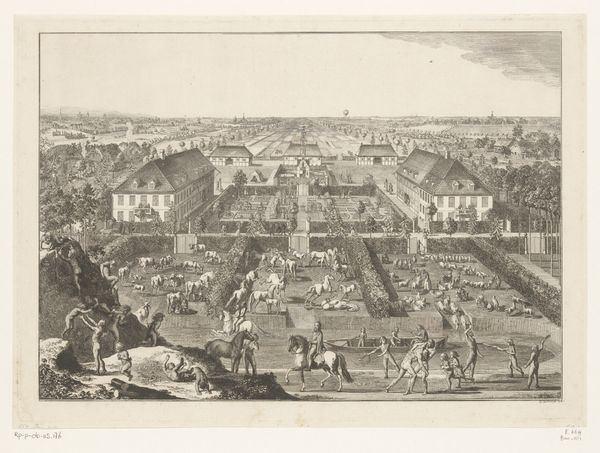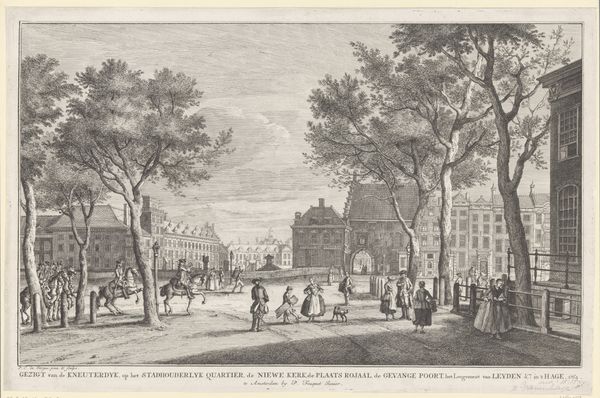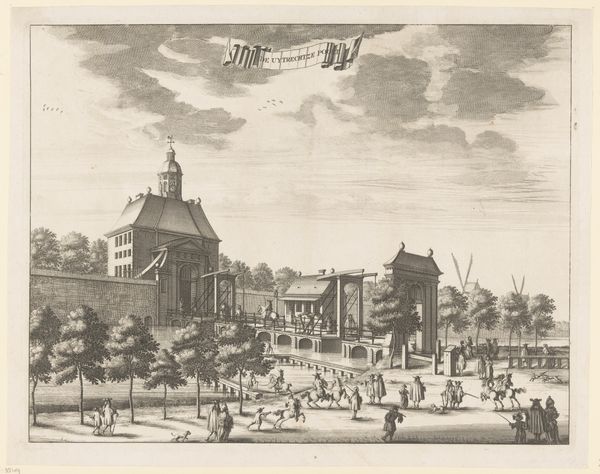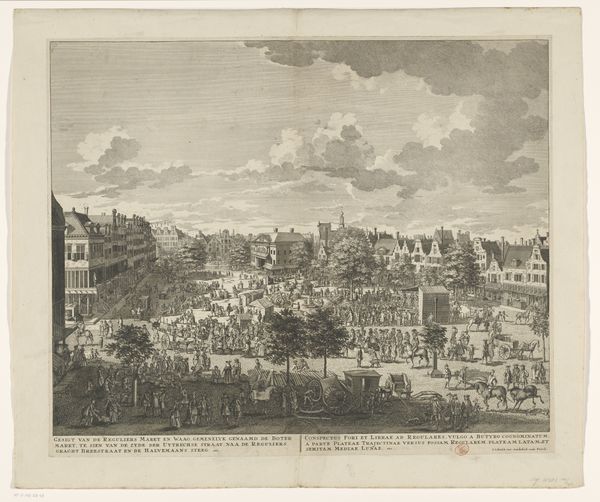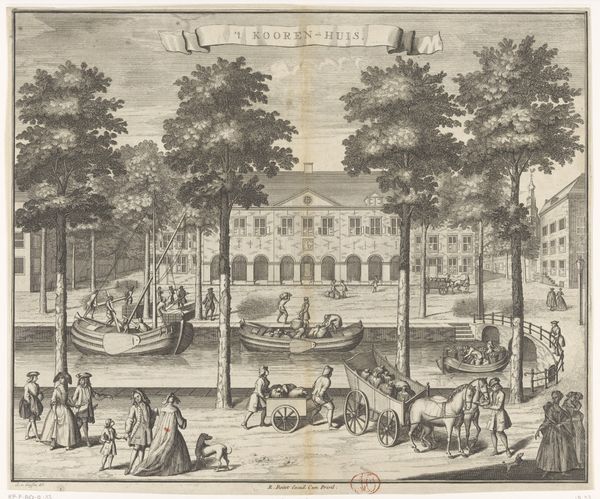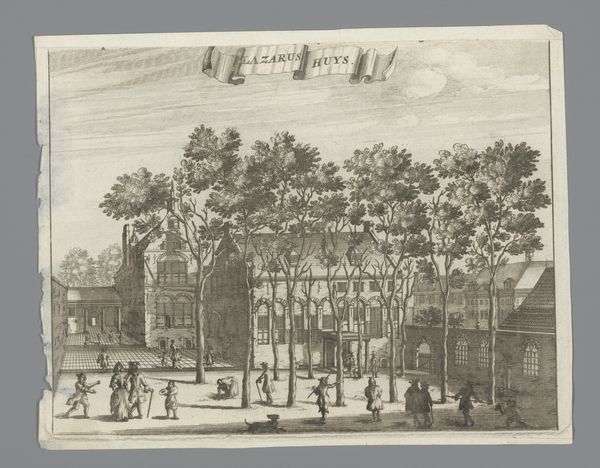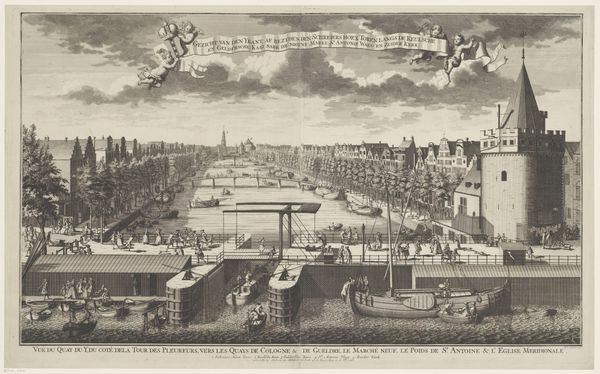
Gezicht op de Hoogduitse en Portugese synagoge van Amsterdam 1659 - 1731
0:00
0:00
print, engraving
#
baroque
#
dutch-golden-age
# print
#
landscape
#
cityscape
#
engraving
Dimensions: width 963 mm, height 564 mm
Copyright: Rijks Museum: Open Domain
This detailed image of the High German and Portuguese Synagogues in Amsterdam was created by Pieter van Gunst using engraving, a printmaking technique. To make this image, Van Gunst would have used a tool called a burin to carve lines directly into a metal plate, likely copper. This painstaking process required immense skill, as every line determines the final image. Ink would then be applied to the plate, filling the etched lines, and the surface wiped clean. The image is transferred to paper under high pressure in a printing press. The texture of the paper, and the depth of the ink, all contribute to the print's visual quality. Consider the labor involved in creating such a detailed scene. Beyond Van Gunst's artistic skill, the production of paper, ink, and the printing press all relied on extensive networks of labor and trade. This image isn't just a depiction of a place; it's also a record of the complex social and economic systems that made its creation possible. Recognizing this connection between materials, making, and context enriches our understanding of the artwork.
Comments
No comments
Be the first to comment and join the conversation on the ultimate creative platform.
